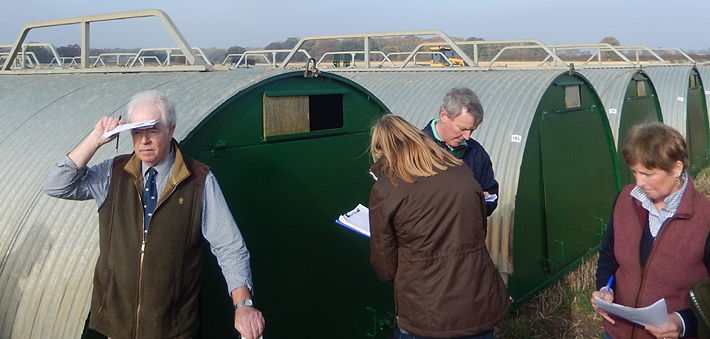Although signs are emerging that UK pig prices might be bumping along the bottom, news that the German producer price has dropped by seven cents sent something of a tremor through the market at a time when we were hoping that prices might begin to stage a seasonal recovery.
This came in spite of a 1.5% increase in the value of the euro, which traded on Friday worth 78.8p.
Although UK spot bacon prices have generally held at similar levels, fresh meat wholesalers are reporting quieter demand for UK pigmeat, with yet more competition from cheaper foreign imports. Belgian carcases readily traded at 120p/kg ex head and feet, and there’s a large volume of different joints and cuts also coming over specifically targeted at the catering trade. Carcase balance also remains a major problem for the processing industry as a whole.
The SPP is also continuing on its downward track and is now quoted at 112.32p, down by 0.57p. We badly need UK pig numbers to tighten up, or EU mainland prices to rise, to arrest further falls in the SPP, which forms such a vital component in most contract price matrix calculations.
The cull sow market has always provided a ready barometer of the health (or otherwise) of EU mainland manufacturing pigmeat prices and although cull sow abattoirs lifted their bids by 1p to 2p/kg in places, this was more influenced by the currency than any signs of a recovery in EU mainland pigmeat values which, as reported earlier, are still heading south. Most cull quotes were between 56p to 58p/kg for next week.
The weaner market remains no place for the faint hearted, with the latest AHDB 30kg weaner average slipping to £35.47/head, and 7kg weaners also reflecting easier prices at £29.05/head, but in many cases these contract weaner prices include an SPP element, so it should be no surprise that they’re continuing to decline.
Cereal prices are continuing to be the pig farmer’s (only) friend, with feed wheat quoted on a spot ex-farm basis in the region of £100/t with reports of well-supplied global grain markets pushing prices to 10 year lows and more carry overs are expected into 2016/2017. This trend is also reflected by March UK LIFFE feed wheat futures, which are now standing at £101.90/t and July quoted at £106.20/t.
Some protein prices are continuing to reflect easier trends, with UK rape meal ex-Kent at £138/t, down by £4/t during the past seven days, although Brazilian soya meal was showing slightly firmer values and quoted for March delivery at £260/t, which represents an increase of £3/t week-on-week.
And finally, just to add to this gloomy report, according to the NPA, prices currently being received by British pig producers have hit a 16-year low in real terms and, to add insult to injury, they’re now only getting 32% of quoted retail prices.
In simple terms, unless we see an improvement in pig prices, many herds will be unsustainable and will join the 450 sows on a farrow-to-finish unit in Yorkshire that has just gone into receivership.
As they say in another sector of the livestock industry, you can shear a sheep every year, but you can only shoot it once!




